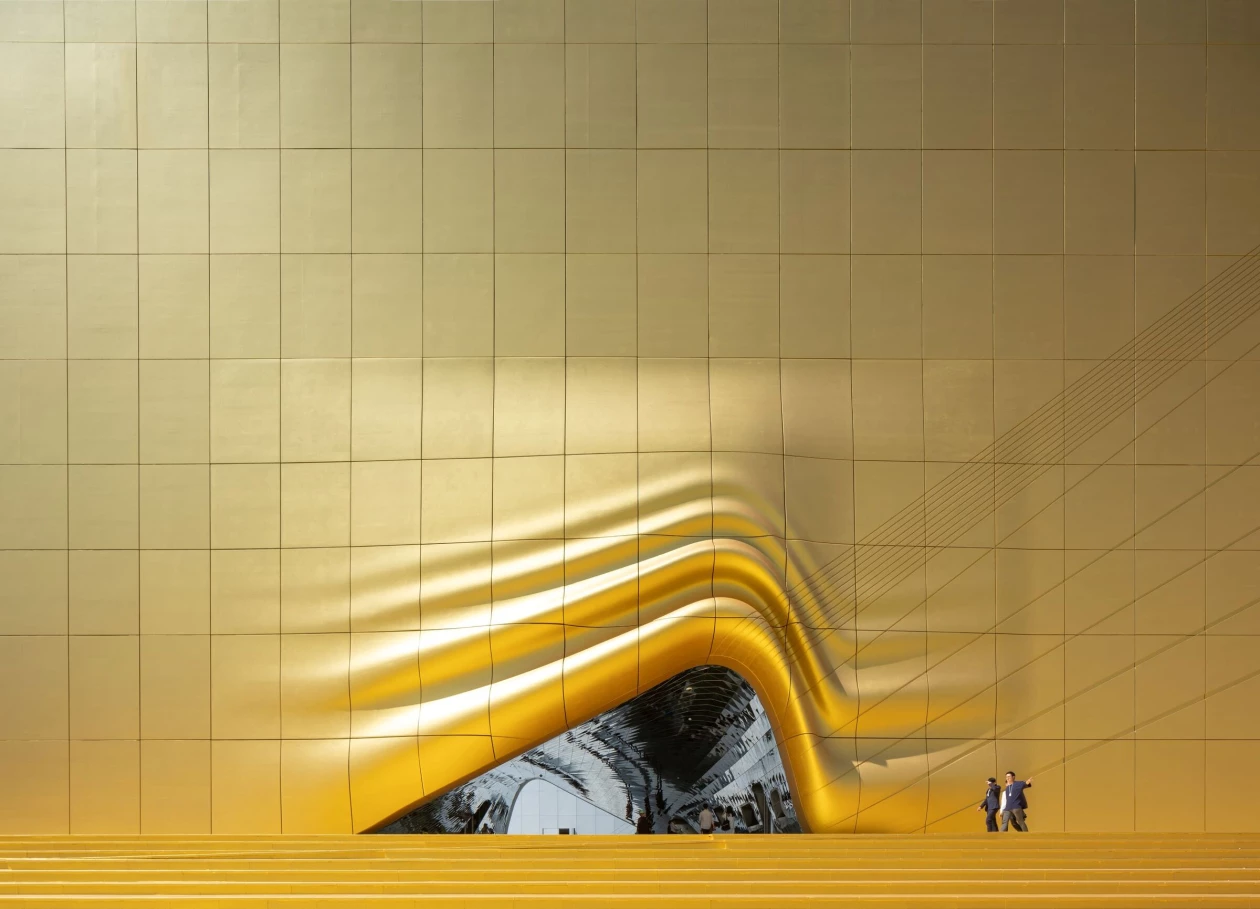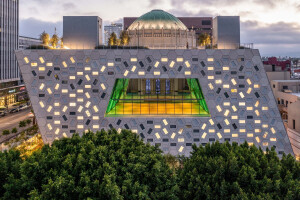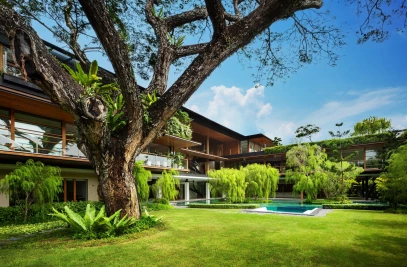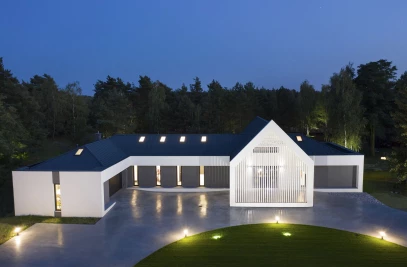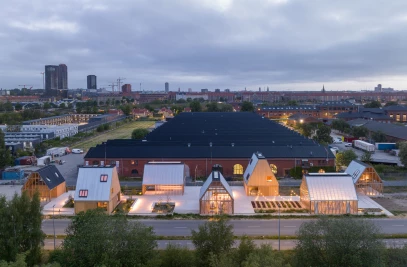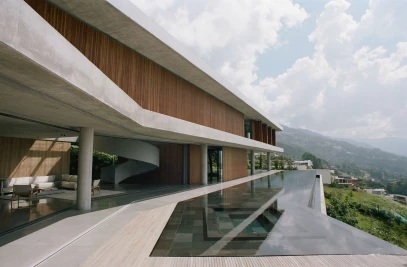Le béton renforcé de fibres de verre (GFRC ou GRC) est un composite léger et durable de ciment renforcé de fibres de verre. Il peut être coulé à la main ou à la machine en panneaux résistants mais minces, à l'aide de moules offrant une diversité croissante de formes et de tailles, de couleurs, de textures et de finitions, qu'elles soient courbes ou plates. Le revêtement en GFRC peut aider les bâtiments à obtenir un caractère monolithique, tandis que les panneaux individuels peuvent être détaillés pour offrir des textures et des formes riches qui confèrent un niveau de complexité visuelle et technique aux enveloppes des bâtiments.
Des pigments en poudre peuvent être utilisés dans les mélanges de GFRC pour obtenir des effets de couleur spécifiques. Des peintures et des produits d'étanchéité peuvent également être appliqués au GFRC pour une meilleure protection ou une plus grande variété de couleurs. Des revêtements transparents peuvent être appliqués aux panneaux afin de réduire les mouvements d'humidité le long des surfaces de ce matériau par ailleurs poreux. Les panneaux peuvent également être polis pour offrir différents degrés de réflectivité.
Typically applied as a rainscreen system, GFRC panels are most often bracket-mounted to a building's waterproof envelope or structure, protecting it from the elements while allowing drainage and evaporation. GFRC is an excellent alternative to ceramic, concrete, terracotta and other solid panel cladding systems.
OMA 's Audrey Irmas pavilion is covered with 1,230 GFRC panels, of unitary and hexagonal shape, inserted in a rectangular window at different angles of rotation. The panels are aggregated to create a strong pattern on the facade of this monolithic structure. The GFRC panels are water sandblasted and textured, with tones chosen for their similarity to the existing adjacent temple finishes.
Le Heydar Aliyev Center de Zaha Hadid Architects se compose de 3 150 panneaux de GFRC produits par Arabian Profile qui couvrent 10 000 mètres carrés de surface et présentent des formes à simple, double et même triple courbure. Chaque panneau est doté d'une puce d'identification contenant toutes les informations relatives à ce panneau spécifique. Le revêtement suit de près la géométrie courbe complexe du bâtiment et lui permet de se lire comme un volume continu qui fait la transition avec la surface plane de la place environnante. Les joints des panneaux sont parallèles et renforcent la courbure du bâtiment.
Aranda/Lasch 's Art Deco project features a facade of molded GFRC panels that form patterns inspired by the folds found in Miami's Art Deco architecture and fashion. The panels fan out above the building's street businesses to create angular boxes set back from the façade. The pattern fluctuates subtly depending on the program within, and is highlighted by lighting integrated into the panel joints.
4. Multi-Sport Pavilion and Classroom Complex
The multi-sport pavilion and classroom complex at Francisco De Vitoria University were designed by Alberto Campo Baeza . Its south facade and other surfaces most exposed to sunlight are clad in large planar GFRC panels which, according to the architect, help the building achieve visual sobriety and formal restraint. The underlying structure of the sports pavilion is constructed of reinforced concrete.
5. The Veil
The Veil by Archea Associati is a five-story hotel located in Astana, Kazakhstan. It is clad in GFRC which functions as a visually vibrant system of vertical slats, like draperies and folds of fine fabric moving in the wind. The pigmented panels are combined with a palette of wood and corten steel to contrast with the glass surfaces. The solidity of the cladding features variable gradients of cuts to allow natural light to penetrate the interior spaces.
6. The Goodtime
Goodtime by Morris Adjmi Architects is an adaptive reuse project for a hotel located in the historic Art Deco district of South Beach in Miami. The building tower and entrance are clad in GFRC fluted panels manufactured by GFRC Cladding System, LLC . The flutes that make up the facade are a modern reinterpretation of the scale and rhythm of the pilasters visible on many historic facades in the district.
7. The Imprint at Paradise City
The footprint of Paradise City, an entertainment and hospitality complex in Seoul created by MVRDV , is clad in an envelope that projects the designs of the facades of the surrounding buildings. These are "draped" over the simple building shapes and squares like a shadow, and printed as a relief pattern using 3,869 GFRC panels with several unique molds. The panels are painted white to accentuate the relief.
8. Arter Koç Foundation Contemporary Arts Museum
Le musée d'art contemporain de la Fondation Arter Koç, conçu par Grimshaw, se caractérise par un volume solide qui abrite des galeries d'exposition revêtues de 1200 panneaux de GFRC produits par Fibrobeton. Les panneaux convexes et concaves de forme rhomboïdale créent une enveloppe spectaculaire et accueillante, et reflètent le soleil lorsqu'il se déplace à travers le musée tout au long de la journée. La riche palette d'ombres et de lumières changeantes anime le bâtiment et offre une réinterprétation attrayante et contemporaine des façades historiques en mosaïque d'Istanbul.
Le LAND Community Center de EID Architecture utilise le GFRC pour habiller la base sculpturale du bâtiment, en contraste avec son volume supérieur vitré. Selon l'architecte, une combinaison de fabrication numérique et d'artisanat local a été expérimentée pour produire les panneaux préfabriqués en GFRC, qui sont façonnés pour créer un effet dynamique d'ondulation de la surface.
10. Prior Performing Arts Center
Le Prior Performing Arts Center de Diller Scofidio + Renfro est revêtu de panneaux GFRC de grand format produits par le fabricant de bardage David Kucera et qui se tordent par rapport à la façade. Le bardage en GFRC est associé à de l'acier patiné par les intempéries pour offrir des contrastes de texture et souligner l'effet de deux formes imbriquées, assurant une transition fluide entre les murs et les toits.
